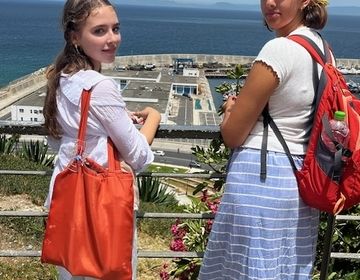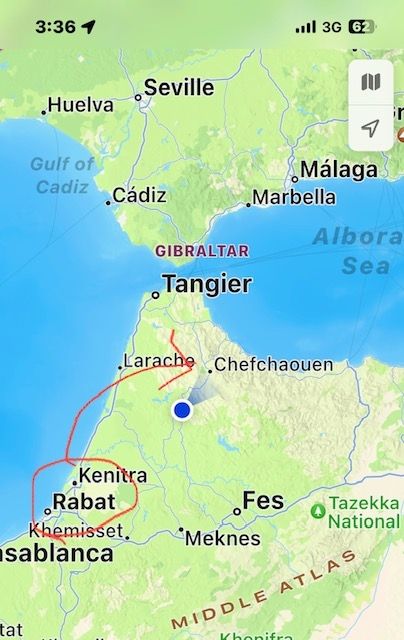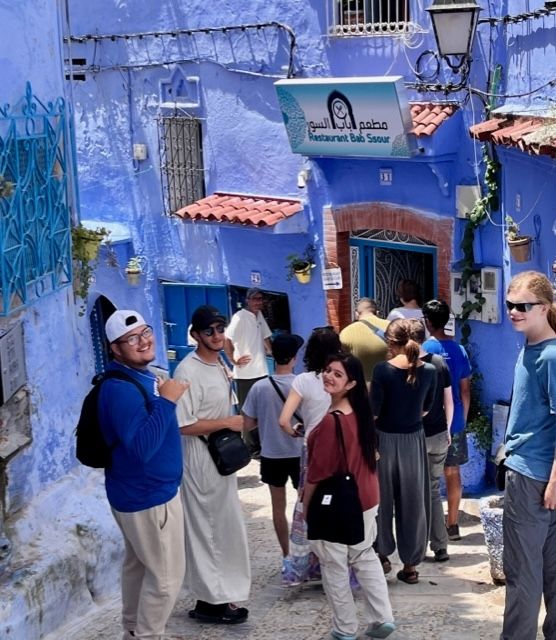Chefchaouen - The blue city!
Our weekend excursion led us to the north to see the mountain town of Chefchaouen, also known as the blue city! Nowadays, Chefchaouen is known as "the Blue Pearl" of Morocco, known for its traditional houses painted in blue and white. The buildings, walls and doors are painted beautiful shades of blue. Our group went on a hike Saturday morning to God's bridge in Akchour which is 45 minutes away from town. The weather was beautiful and the students got to swim in the cool, refreshing water at the end of the hike.
Chefchaouen's blue walls are a popular subject of interest. There are several theories as to why the walls were painted blue. One popular theory is that the blue keeps mosquitos away. The blue is said to symbolize the sky and heaven, and serve as a reminder to lead a spiritual life. However, according to some locals, the walls were mandated to be painted blue simply to attract tourists at some point in the 1970s. Whatever the reason, the different shades make for a beautiful visit and lots of great photos!
Chefchaouen – or Chaouen, as it is often called by Moroccans – is a popular destination because of its proximity to Tangier and the Spanish enclave of Ceuta.Chefchaouen also offers many native handicrafts that are not available elsewhere in Morocco, such as wool garments and woven blankets. They also produce goat cheese native to the area.
Related Posts
Weekend in Marrakesh
Our Weekend in Marrakesh - This blog was written by one of our students - Nyx Lange Reflecting on our past weekend excursion to Marrakesh from our Moroccan base of... keep reading

Exploring Tangier: A Day in Morocco's Gateway to Africa
This past weekend, our group ventured to the north of Morocco to the vibrant city of Tangier where the Mediterranean Sea meets the Atlantic Ocean First, we met our guide... keep reading

Bssaha wa Raha L'hammam🚰🪣🧼 بالصحة و الراحة الحمام
By Program Leader, Mohsin: Hey everyone! As your Moroccan program leader, I’m thrilled to introduce you to one of our country’s most cherished traditions: the hammam. If you’ve never heard... keep reading








